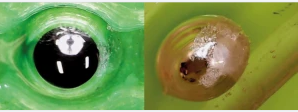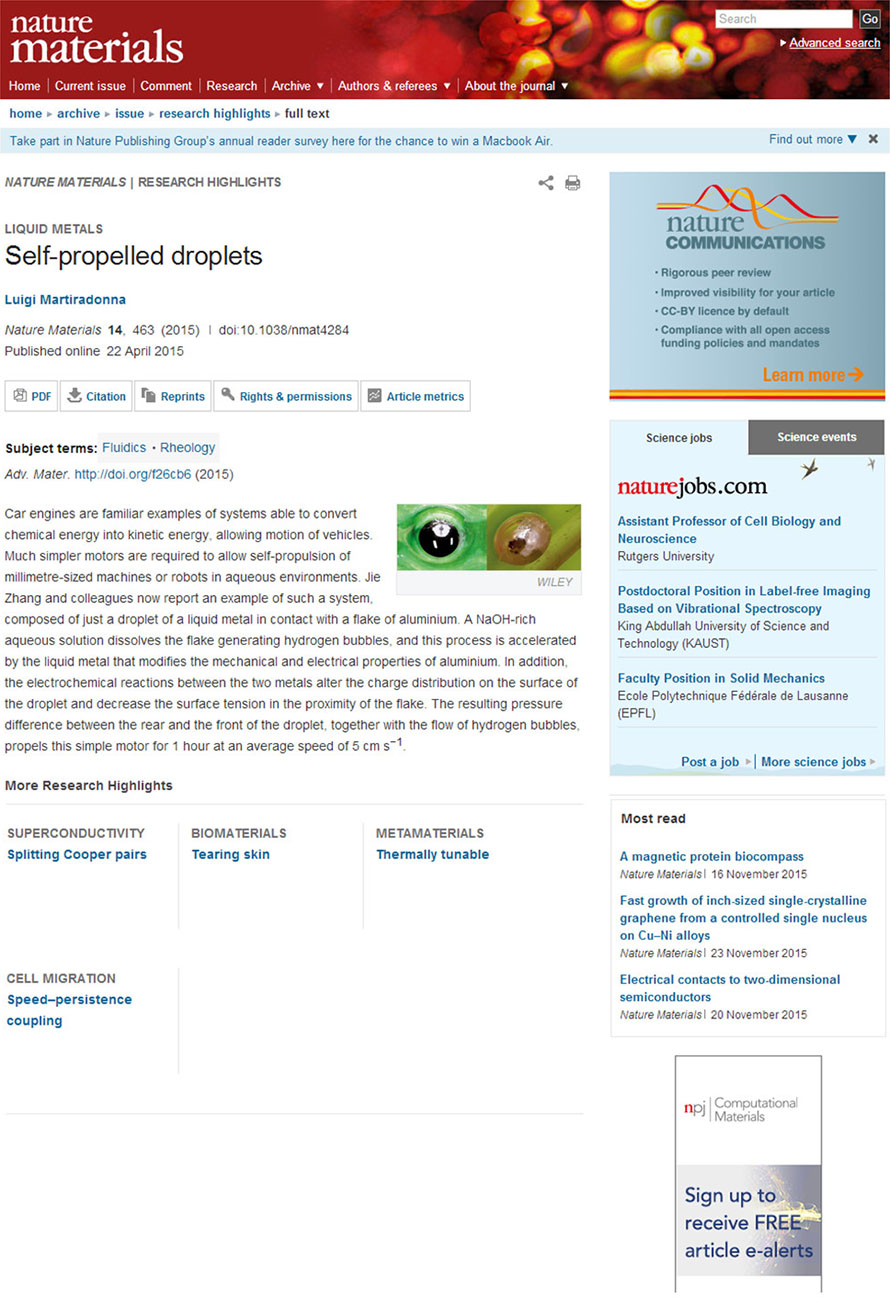國際知名期刊Nature Materials點(diǎn)評(píng)液態(tài)金屬自驅(qū)動(dòng)機(jī)器人技術(shù)
- 分類:行業(yè)新聞
- 作者:
- 來源:
- 發(fā)布時(shí)間:2022-09-02 13:46
【概要描述】Car engines are familiar examples of systems able to convert chemical energy into kinetic energy, allowing motion of vehicles.
國際知名期刊Nature Materials點(diǎn)評(píng)液態(tài)金屬自驅(qū)動(dòng)機(jī)器人技術(shù)
【概要描述】Car engines are familiar examples of systems able to convert chemical energy into kinetic energy, allowing motion of vehicles.
- 分類:行業(yè)新聞
- 作者:
- 來源:
- 發(fā)布時(shí)間:2022-09-02 13:46
- 訪問量:
Self-propelled droplets

Car engines are familiar examples of systems able to convert chemical energy into kinetic energy, allowing motion of vehicles. Much simpler motors are required to allow self-propulsion of millimetre-sized machines or robots in aqueous environments. Jie Zhang and colleagues now report an example of such a system, composed of just a droplet of a liquid metal in contact with a flake of aluminium. A NaOH-rich aqueous solution dissolves the flake generating hydrogen bubbles, and this process is accelerated by the liquid metal that modifies the mechanical and electrical properties of aluminium. In addition, the electrochemical reactions between the two metals alter the charge distribution on the surface of the droplet and decrease the surface tension in the proximity of the flake. The resulting pressure difference between the rear and the front of the droplet, together with the flow of hydrogen bubbles, propels this simple motor for 1 hour at an average speed of 5 cm s−1.

掃二維碼用手機(jī)看
技術(shù)成果
版權(quán)所有:云南科威液態(tài)金屬谷研發(fā)有限公司 滇ICP備16003182號(hào)-2
-
咨詢時(shí)間:
8:30—11:30
13:00—17:30
頂部


